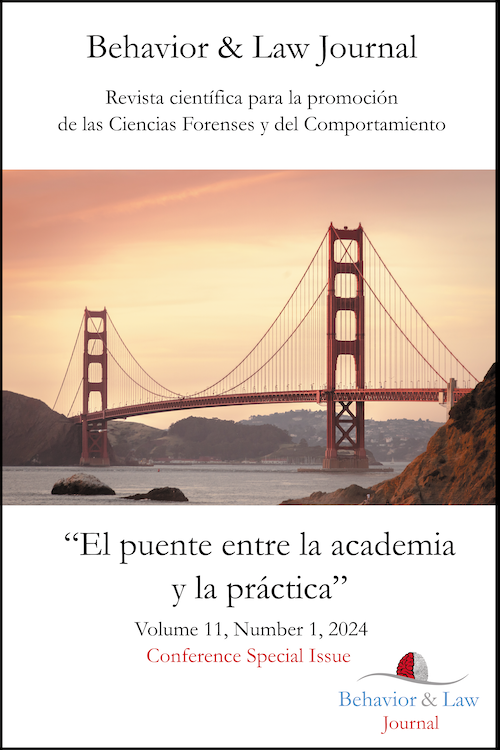Resumen
Forensic Linguistics is a relatively emerging discipline that has established itself as an essential field within Applied Linguistics. Its origin lies in traditional linguistic theories, which provide the necessary tools for the analysis and interpretation of texts and discourses in legal contexts, but also on related fields, such as Literature, where experts have developed methods to attribute the authorship of ancient texts, among others. Over the last decades, Forensic Linguistics has evolved to become a key tool in the resolution of legal cases, from the analysis of witness and expert statements to the identification of perpetrators through language. This article explores the origins of Forensic Linguistics, its development within Applied Linguistics and its relevance in the field of justice. It also discusses some outstanding cases that have demonstrated the impact of this discipline in solving crimes, highlighting how linguistic knowledge can be of great help to law enforcement agencies in identifying patterns, interpreting evidence and clarifying facts. Finally, some of the future trends and challenges are pointed out.
Citas
Afarli, T., Maehlum, B. (2014). The Sociolinguistics of Grammar. John Benjamins Publishing House.
Akmajian, A., Demers, R.A., Farmer, A.K., Harnish, R. (2001). Linguistics. An introduction to language and communication. The MIT Press.
Alonso, L.E., Fernández Rodríguez, C.J. (2006). Roland Barthes y el análisis del discurso. EMPIRIA. Revista de metodología de las Ciencias Sociales, 12, pp. 11-35.
Austin, John L. (1962). How to Do Things with Words. Oxford University Press.
Basim, Y.J. (2012). Author attribution in suicide notes: evidence from applied linguistics. Comparative Legilinguistics, 10, 7–22.
Beaugrande, R. y Dressler, W. (1981). Introduction to text linguistics. Routledge.
Caplan, S. (2018). Word learning as category formation. Proceedings of the Society for Computation in Linguistics, 1(1), 174-177.
Celma, M.P., Ruiz, C. (2021). Una aproximación a la escritura de Miguel Delibes desde la estilometría. Tonos digital: Revista de estudios filológicos, 41, 1-13.
Chaski, C.E. (1999). Linguistic authentication and reliability. National Institute of Justice.
Chomsky, N. (1997). Language and problems of knowledge. Teorema, 16(2), 5-33.
Cicres, J. Gavaldà, N. (2014). La lingüística forense: la llengua com a evidencia. Revista de Llengua i Dret, 61, 60-71.
Crespo, M. (2017). PRESEEA y su aporte a la creación de perfiles lingüísticos en Lingüística Forense. Linred: Lingüística en la Red, 15.
Crystal, D. (2001). Language and the internet. Cambridge University Press
Estival, D., Gaustad, T., Hutchinson, B., Radford, W. (2007). Author profiling for English and Arabic emails. Proceedings of the Australasian Language Technology Workshop 2007, pages 21–30.
FBI (2020). Internet Crime Report 2020.
Foucault, M. (1968). Las palabras y las cosas. Una arqueología de las ciencias humanas. Siglo XXI.
Frías, A. (2009) Distribución de frecuencias de la longitud de las palabras en español: aspectos diacrónicos y de estilometría. A survey of corpus-based research, 756-770.
Gibbons, J., Turell, M.T. (eds.). (2008). Dimensions of Forensic Linguistics. John Benjamins.
Kilgarriff, A., Rundell, M. (2016). Lexical profiling software and its lexicographic applications – a case study. Euralex proceedings, 807-818.
Moreno Sandoval, A. (2019). Lenguas y computación. Síntesis
Ramírez, M. (2017). Antecedentes de la lingüística forense: ¿desde cuándo se estudia el lenguaje como evidencia? Pragmalingüística, 25, 525-539.
Searle, J.R. (1970). Speech acts: an essay in the philosophy of language. Cambridge University Press.
Shuy, R.W. (2016). The language of fraud cases. Oxford University Press.
Waller, S. (2015). Cohesion is still not coherence, so what is? English teaching in China, 6, 31-35.
Yule, G. (2010). The study of language. Cambridge University Press.

Esta obra está bajo una licencia internacional Creative Commons Atribución-NoComercial-SinDerivadas 4.0.
Derechos de autor 2025 Behavior & Law Journal
